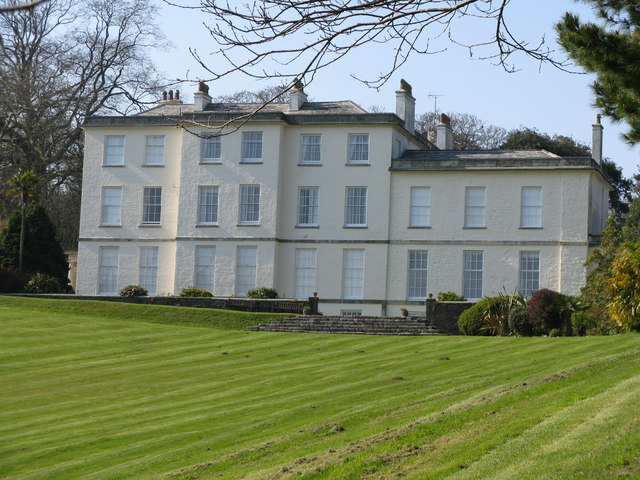Heligan on:
[Wikipedia]
[Google]
[Amazon]
 The Heligan estate (; kw, Helygen, meaning
The Heligan estate (; kw, Helygen, meaning
 The garden remained in the ownership of the Tremayne family, but was not maintained. It was rediscovered and rescued in a televised project in 1996. The
The garden remained in the ownership of the Tremayne family, but was not maintained. It was rediscovered and rescued in a televised project in 1996. The
/ref> the gardens include enormous
 The Heligan estate (; kw, Helygen, meaning
The Heligan estate (; kw, Helygen, meaning willow tree
Willows are a genus of trees.
Willow Tree may refer to:
Places
* Willow Tree, New South Wales, a village in Australia
* Willow Tree railway station, in Australia
* Willow Tree (LIRR station), a railway station in New York
Entertainment
* "Willow ...
) was the ancestral home
An ancestral home is the place of origin of one's extended family, particularly the home owned and preserved by the same family for several generations. The term can refer to an individual house or estate, or to a broader geographic area such as a ...
of the Tremayne family near Mevagissey
Mevagissey (; kw, Lannvorek) is a village, fishing port and civil parishes in England, civil parish in Cornwall, England, United Kingdom.Lost Gardens of Heligan
The Lost Gardens of Heligan ( kw, Lowarth Helygen, meaning "willow tree garden") are located near Mevagissey in Cornwall, England and are considered to be amongst the most popular in the UK. The gardens are typical of the 19th century Ga ...
are now open to the public as a tourist attraction.
Heligan House
Originally owned by the Heligans, the estate was bought by Sampson Tremayne in 1569. Heligan House was built by William Tremayne in 1603 inJacobean style
The Jacobean style is the second phase of Renaissance architecture in England, following the Elizabethan style. It is named after King James VI and I, with whose reign (1603–1625 in England) it is associated. At the start of James' reign there ...
, but only the basement of that house remains. The house was substantially rebuilt in 1692 by Sir John Tremayne (1647–1694) in William and Mary style
What later came to be known as the William and Mary style is a furniture design common from 1700 to 1725 in the Netherlands, the Kingdom of England, the Kingdom of Scotland, Kingdom of Ireland and later, in England's Thirteen Colonies, American co ...
and extended in 1810 and 1830. Unusually for Cornwall, the house is built of brick. Set at the top of a hill overlooking Mevagissey
Mevagissey (; kw, Lannvorek) is a village, fishing port and civil parishes in England, civil parish in Cornwall, England, United Kingdom.World War I
World War I (28 July 1914 11 November 1918), often abbreviated as WWI, was one of the deadliest global conflicts in history. Belligerents included much of Europe, the Russian Empire, the United States, and the Ottoman Empire, with fightin ...
, at which point the house was let out. The tenants were unable to keep up maintenance of the estate and by the end of World War II
World War II or the Second World War, often abbreviated as WWII or WW2, was a world war that lasted from 1939 to 1945. It involved the vast majority of the world's countries—including all of the great powers—forming two opposin ...
, maintenance of the house and gardens slipped into decline. The house was divided into flats and sold in the 1970s, with the remaining buildings also being converted into accommodation.
Gardens
 The garden remained in the ownership of the Tremayne family, but was not maintained. It was rediscovered and rescued in a televised project in 1996. The
The garden remained in the ownership of the Tremayne family, but was not maintained. It was rediscovered and rescued in a televised project in 1996. The Lost Gardens of Heligan
The Lost Gardens of Heligan ( kw, Lowarth Helygen, meaning "willow tree garden") are located near Mevagissey in Cornwall, England and are considered to be amongst the most popular in the UK. The gardens are typical of the 19th century Ga ...
are now a major visitor attraction.
Originally developed by Rev. Henry Hawkins TremayneA Genealogical and Heraldic Dictionary of the Landed Gentry of Great Britain 1863, p.1535: Tremayne descent./ref> the gardens include enormous
rhododendrons
''Rhododendron'' (; from Ancient Greek ''rhódon'' "rose" and ''déndron'' "tree") is a very large genus of about 1,024 species of woody plants in the heath family (Ericaceae). They can be either evergreen or deciduous. Most species are nati ...
and camellias
''Camellia'' (pronounced or ) is a genus of flowering plants in the family Theaceae. They are found in eastern and southern Asia, from the Himalayas east to Japan and Indonesia. There are more than 220 described species, with some controversy ...
as well as a series of lakes fed by ram pump
A plunger pump is a type of positive displacement pump where the high-pressure seal is stationary and a smooth cylindrical plunger slides through the seal. This makes them different from piston pumps and allows them to be used at higher pressures. ...
. They include Europe's only remaining pineapple pit
A pineapple pit is a method of growing pineapples in colder climates. One of the earliest examples in Britain has been found by archaeologists at Heligan in Cornwall.The Lost Gardens of Heligan Handbook, 2002 Updated 2007, copyright Heligan Gar ...
, and two large sculptures known as the Mud Maid and Giant's Head.
References
{{DEFAULTSORT:Heligan Estate Country houses in Cornwall